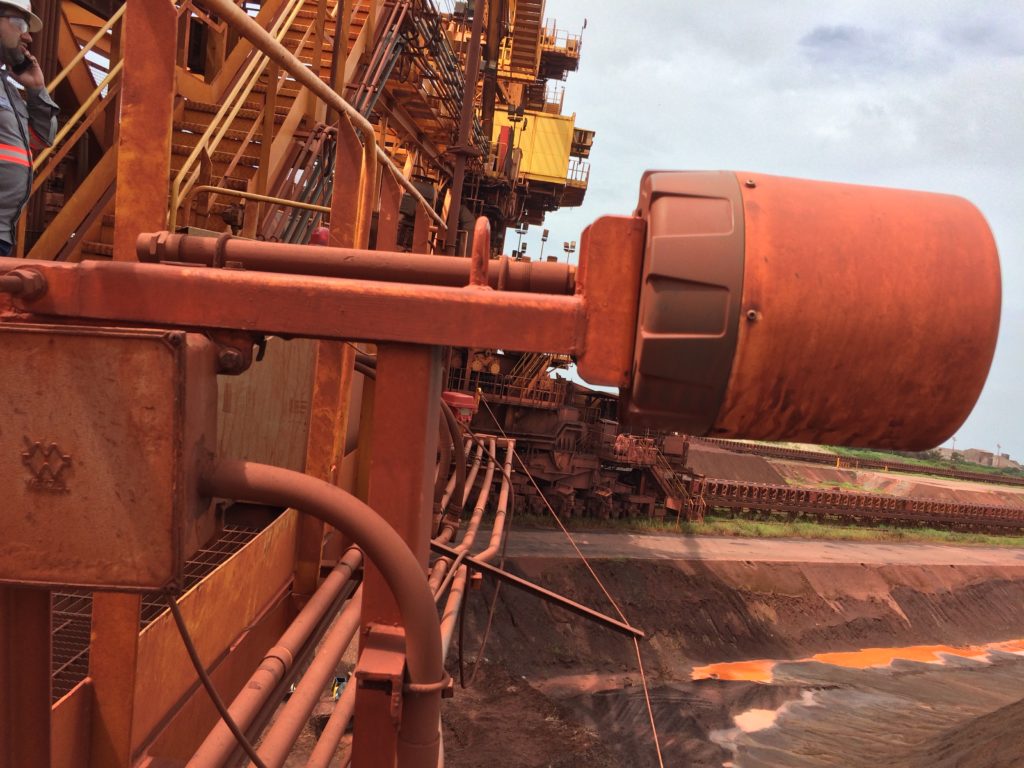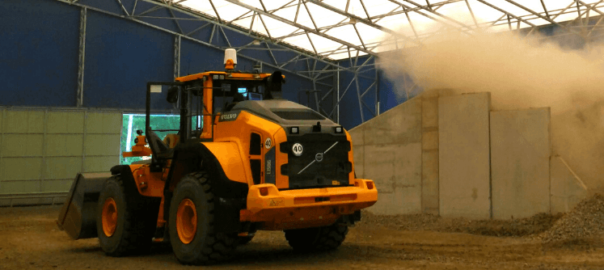Relying solely on one sensor-based technology for autonomous operation of vehicles is a risk most mining operators cannot afford to take, according to Navtech Radar’s Sam Wood.
This threat to operational continuity is likely to become wholly apparent in 2026 when an expected solar excitation event pushes many GPS-based systems offline, Wood says.
The Product Manager for Oxford-based Navtech Radar was speaking to IM on the sidelines of the recent Bauma 2022 fair in Munich, Germany; an event where the company launched its Terran360 single sensor radar localisation solution.
Terran360 leverages Navtech’s millimetre wave radar technology to, it says, reliably position a vehicle in its surroundings, particularly in harsh working environments such as mining and construction.
While Navtech is very much tied to radar-based solutions, it is focused on integrating its platform into multi-sensor fusion setups at mine sites, integrating with LiDAR, GPS and others.
“We see our solutions complementing and integrating with other technologies,” he said. “We feel mines and other industrial sites should not have a ‘single point of failure’ within an automated setup as this can lead to unnecessary downtime, or – in some cases – potential accidents or injuries.”
Autonomous vehicles in the mining and construction sectors typically rely on GPS sensors to report their location, but the ability to reliably maintain centimetre-level positioning required for autonomy, especially within developments with tall infrastructure, deep pits or at high latitudes, is often compromised, Navtech says.
“Terran360, on the other hand, draws on high resolution radar technology which penetrates the atmospheric and weather conditions to constantly deliver highly accurate, centimetre-level location data,” it explained.
Wood says increases in GPS attacks – through “jamming” and “spoofing” – means relying on GPS alone is becoming commercially risky for autonomous mine operators. This is on top of the solar excitation event expected in 2026.
“Terran360, and other examples of innovation developed by Navtech, aims to address these challenges,” he said.
Delivered in partnership with autonomous vehicle software specialist, Oxbotica, Terran360 is certified to IP66 standard, meaning the radar localisation technology is completely protected from water and debris, ensuring constant operation and minimal maintenance to enable 100% visibility of assets at all times, it says.
“Oxbotica’s world-class localisation algorithms are combined with Navtech’s ruggedised industrial radar sensors to provide a package that is resilient to weather and harsh environments,” Navtech added.
Oxbotica’s product portfolio for the mining sector includes software that spans the entire technological spectrum, from low-level sensor managers, through calibration, four-modal localisation (vision, laser radar and GNSS), mapping, perception (with vision, lidar or radar), 3D mapping and planning and control.
Navtech and Oxbotica have been partnering on solutions in mining, following several successful radar deployments. These include trials in one of Boliden’s major underground mines in Europe where the radar sensors are providing situational awareness to support equipment retrieval from smoke-logged mining tunnels.
Boliden is – independently from Navtech or Oxbotica – developing automation technologies for mines with the goal of maintaining round-the-clock operations, following the demonstrable improvements in safety shown using radar technology and various other sensors.
Further to this, Navtech has also partnered with Örebro University in Sweden where its radar-based sensor was trialled as part of a sensor fusion project within the university’s Centre for Applied Autonomous Sensor Systems. This has seen Navtech’s radar tested in both a teleremote and automated setup in applications such as mining.

Wood says more companies are interested in these types of automated solutions, but the company is also continuing to see demand for radar-based platforms in other mining applications.
Here he highlighted one example in Minas Gerais, Brazil, where the company’s CIR sensor-based solution is providing 3D stockpile management and anti-collision detection in a ship loader application at a port (pictured above).







